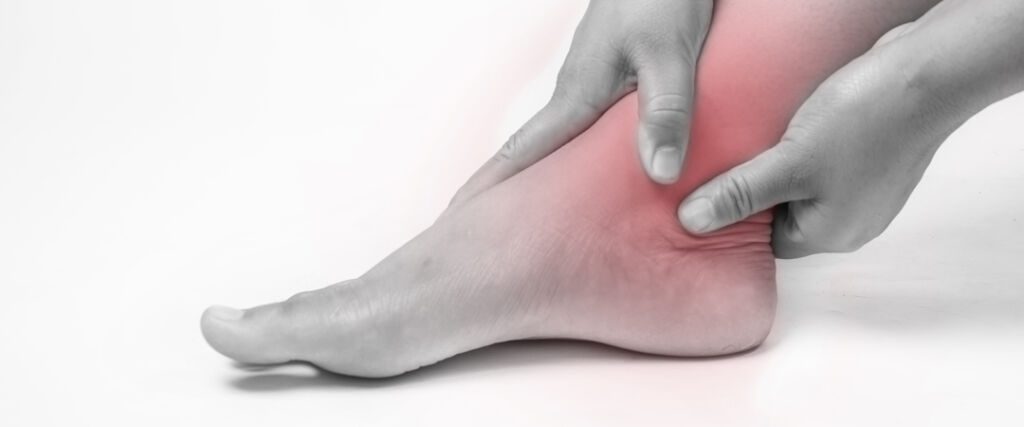
Ankle surgery may be needed to treat a variety of problems, such as fractures, severe sprains or chronic conditions. In this handy guide, you’ll learn about the different types of ankle surgery, recovery times and expected outcomes to help you make an informed decision about your treatment.
WHAT IS ANKLE SURGERY?
Ankle surgery is a medical procedure to treat ankle problems such as fractures, severe sprains or chronic conditions. There are several types of ankle surgery, including internal fixation, fusion and ligament reconstruction. Your choice of procedure will depend on the type and severity of your ankle problem, as well as your general health.
ANKLE FRACTURE CASE:
Ankle fractures are a common sports injury. They can be difficult to diagnose because many of the symptoms are similar to other ankle injuries. Ankle fractures are often complicated by the development of arthritis and other long-term problems.
Ankle fractures most often occur after a fall or a direct blow to the ankle. The most common types of ankle fracture are:
- Talar fracture: This is a fracture at the top of the tibia (shinbone) and fibula (outer leg bone). It can be caused by a direct blow or torsion.
- High ankle fracture: This is a fracture at the top of the tibia and fibula, near the back of the heel. A high ankle fracture usually occurs when you land awkwardly after jumping or running downhill or on uneven ground, causing the foot and ankle to twist outwards while still bent forward. You may hear or feel a “pop” when this happens.
- Low fracture: This is an incomplete fracture of the tibia or fibula below where it connects to the central joint (ankle). Low fractures often occur when you roll or fall on an outstretched foot, causing it to bend sharply backwards while still supported.
OTHER CASES
SEVERE SPRAINS:
The most common cause of ankle sprains is a sudden change in direction. This can happen when you twist your foot to avoid stepping on something, or when you try to stop suddenly. The ligaments in the ankle are stretched beyond their normal range and can tear.
Ankle sprains are graded according to severity:
Grade 1 sprain: Stretch injury with a small ligament tear, such as a twist or sprain of the ankle. There may be swelling, bruising and pain, but no instability or loss of function.
Grade 2 sprain: Partial tear of one or more ligaments, usually without displacement (movement) of the joint. There may be instability in the joint, which is usually obvious on examination (for example, the foot turns outwards). There may be swelling, bruising and pain, but no instability or loss of function.
Grade 3 sprain: Complete tearing of one or more ligaments, with dislocation of the joint. There is significant joint instability, but it should be possible to move the ankle normally despite this instability. There may be swelling, bruising and pain in the joint.

CHRONIC CONDITIONS:
Chronic ankle conditions are a group of ankle conditions that are generally long-lasting and recurrent. Most chronic ankle conditions present with pain and swelling, but some can lead to instability, loss of movement and muscle weakness.
Chronic ankle conditions can be divided into two broad categories:
- Arthritis: There are several types of arthritis that affect the ankle, including osteoarthritis, rheumatoid arthritis and septic arthritis. Osteoarthritis affects the cartilage that covers the ends of the bones and is most common in people over the age of 50. Rheumatoid arthritis is an autoimmune disease in which the immune system attacks the joints, causing inflammation, pain and stiffness. Septic arthritis occurs when bacteria enter the joint space through an infected wound or fracture, causing inflammation in the joint tissue itself.
- Ligament injuries: A ligament is a fibrous band that connects two bones at a joint and provides stability to the joint structure. The most common ligament injury affecting the ankle is a sprain of the anterior talofibular ligament, which occurs when an external force pulls on the lateral malleolus (ankle bone), causing it to twist inward towards the other bone on the same side (the tibia).
TYPES OF ANKLE SURGERY:
There are several types of ankle surgery, each with its own advantages and disadvantages. Internal fixation is a procedure that uses screws, plates or pins to hold the ankle bones together. Arthrodesis is a procedure that aims to fuse the ankle bones together to create a strong, stable joint. Ligament reconstruction is a procedure to repair or replace damaged ankle ligaments. Your surgeon will decide which procedure is best for you.
RECOVERY TIME AFTER ANKLE SURGERY:
Recovery time after ankle surgery depends on the type of surgery performed and the severity of the injury. In general, it takes about 6 to 12 weeks to fully recover from ankle surgery. During this time, it’s important to follow your surgeon’s instructions for post-operative care, rehabilitation and physiotherapy. It’s also important to take time to rest and allow your body to heal properly.
RISKS AND COMPLICATIONS OF ANKLE SURGERY:
As with any surgical procedure, there are risks and complications associated with ankle surgery. Common risks include infection, excessive bleeding, blood clots and allergic reactions to the anaesthetic. Complications can include persistent pain, joint stiffness, loss of mobility, muscle weakness and recurrence of the injury.
It’s important to discuss these risks with your surgeon before deciding to have ankle surgery.
EXPECTED RESULTS AFTER ANKLE SURGERY:
The expected results of ankle surgery depend on the type of surgery performed and the severity of the injury. In most cases, patients can expect a significant improvement in pain, mobility and ankle function. However, it’s important to follow your surgeon’s recovery instructions to maximise results and minimise the risk of complications. Recovery can take anywhere from a few weeks to several months, depending on the procedure and the severity of the injury.

